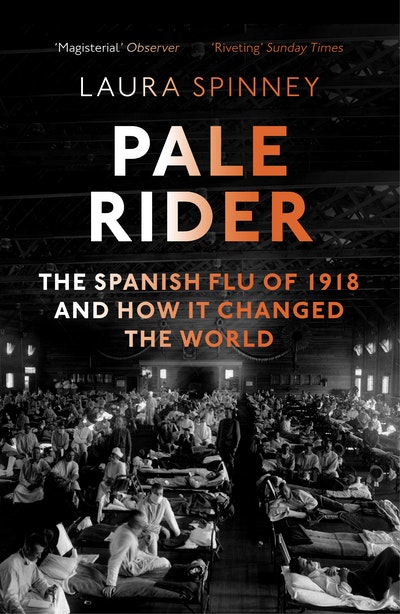
Laura Spinney’s opportune history of the Spanish Flu, Pale Rider (2017), is an arresting work. As we live through the current lockdowns in response to Covid-19, we can learn by looking back to previous pandemics. It is reassuring to see how far medical knowledge and technology have improved since 1918, but also disconcerting to observe how we repeat the mistakes of the past.
In 1918 doctors and biological scientists knew about bacteria but not viruses. They were aware of the values of vaccines, but had only the beginnings of the techniques to construct them. So we have come a long way, in that modern science can identify the genetic and molecular structure of the SARS-CoV-2 virus, and invent a variety of vaccines to combat it within a year of its discovery.
But many features of human response to pandemics have been repeated a century on from the Spanish Flu – a pandemic that killed between 50 and 100 million people. Where speed of response was essential, governments have delayed their actions, allowing the virus to spread, to become more established, and the number of cases and deaths to multiply many times.
In 1918, some countries successfully applied quarantine and a cordon sanitaire to block infected immigration. Whereas American Samoa had a very low level of infection, neighbouring New Zealand administered Western Samoa was decimated. This time around, New Zealand has been one of the beacons of quick effective action, whereas the UK was remarkably lax at checking the initial inflow of infected individuals.
Crowds welcoming back fighters from the European killing fields provided ideal circumstances for the Spanish Flu to spread. In Chile, the crowds were to greet the local pilot who had become the first to fly over the Andes. In 2020, many governments were unwilling to cancel what became ‘super-spreader’ events – the March Cheltenham race-meeting, the Liverpool football match with Atletico Madrid, or the Republican political rallies in the USA.
The human tendency to blame others for a virus whose mutation to become the agent of pandemic is common to both 1918 and 2020. The Spanish Flu was probably not Spanish in origin: the first cases were in military camps in America and in Etaples, France, although it is hard to pinpoint exactly where. Human agrarian and urban society, with opportunities for mixing between humans and domestic and wild fowl and swine populations seem to be essential environments for viral progression to a pandemic. In 2020, Donald Trump repeatedly referred to the ‘China virus’, although again the full story has still to be established.
Pale Rider points out that in the aftermath of 1918-20, contemporary literature featured a theme of on-going sickness, including what came to be called ‘post-viral fatigue’. Writers like D.H.Lawrence, Virginia Woolf, T.S.Eliot, and Dashiel Hammett had their own medical problems, and were writing in a society characterised by many mourning citizens and many living with post-viral symptoms. Asylum records in neutral Norway showed a seven-fold increase in admissions for mental illnesses in each of the six years following 1918. We are already conscious of long-Covid and mental health problems, but the consequences for our society, its culture and economy, are still to work themselves out.
The absence of world leaders struck down by illness, men like Woodrow Wilson, Clemenceau, Mahatma Gandhi, and others, had important ramifications for decisions taken after World War I. In the last twelve months, the absence of Donald Trump, Boris Johnson, Macron and others, may have delayed decisive action.
Above all, the pandemics of 1918 and 2020 have shown contemporaries the gaps in the current medical and public health provision, and the gaps in information. Test and trace systems can only work if there is a good system of public health laboratories that can process results quickly and engage with local communities (as recommended in the 2016 GHRF report about pandemic preparedness). Hence we see the relative successes for Test and Trace in Germany and S.Korea, and the relative failure in the UK.
Laura Spinney’s book is engrossing, and also well-written. It has a perspective that encompasses much more than a simply Western view of the flu pandemic, including vignettes from India, Persia, S.Africa, Samoa, Alaska and S.America. A great read.
Spinney, L (2017) Pale Rider. The Spanish Flu of 1918 and how it changed the world, London, Vintage
